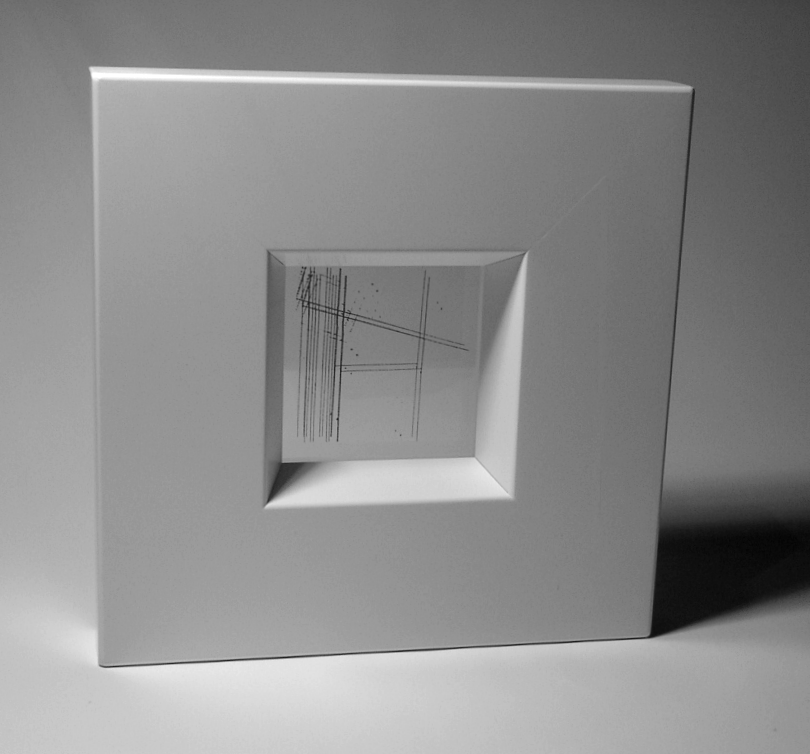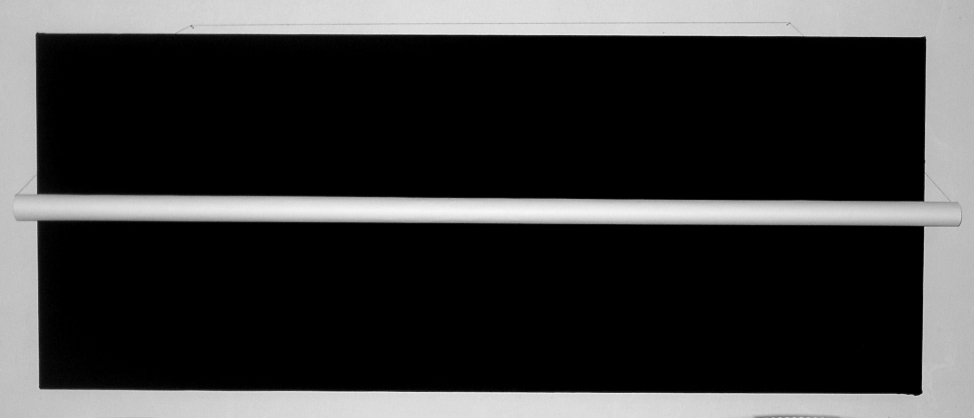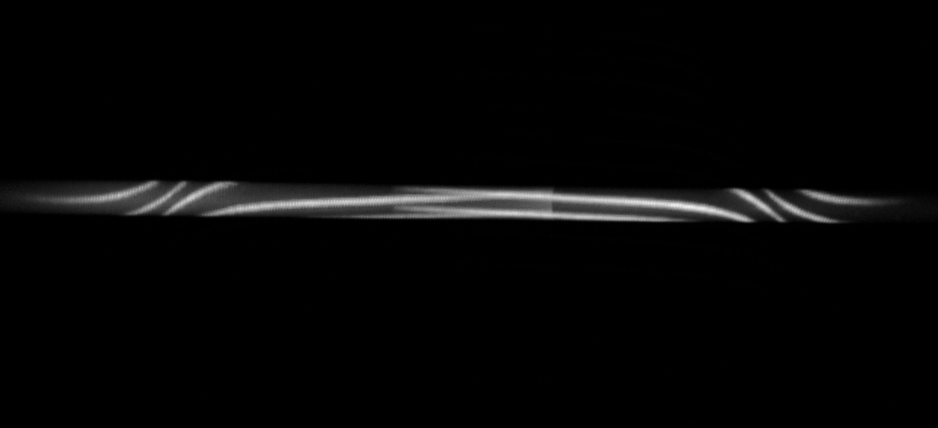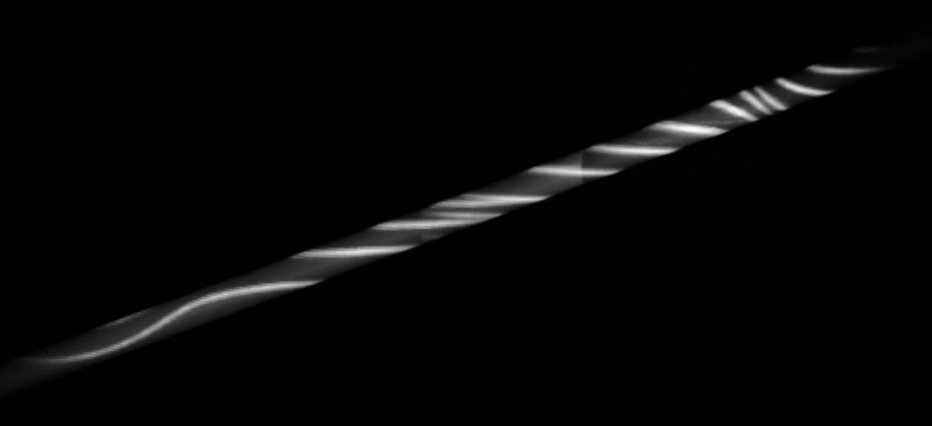|
Éva T. Bortnyik and Csaba Tubák
EXHIBITION ITEMS 1 "The profile of Symmetry – Symmetry profiled" Moving an imaginary symmetry-axis, a two-dimensional
symmetry-plane comes to existence. On both sides of this virtual symmetry-plane
we can find a transparent imprint of the same composition. As a result
one can experience different imprints ("profiles") of this double-picture
composition, depending on the point or angle the picture is being looked
at.
Figure 1: Symmetry profile (20 x 20 cm, films, wood, glass). 2 "Disturbed Symmetry"
With the help of two video projectors set up parallelly
the same geometrical animation will be projected two times /partly overlapping/
onto a black screen, where the picture becomes colourless. A white horizontal
cylinder is located in the center of the black background (Fig. 3). The
two projected pictures differ from each other, since one of the projectors
always shows the mirror-image of the animation. Consequently, the symmetry-axis
runs vertical in the middle of the picture (Fig. 4, 5, 6).
Figure 3: Disturbed Symmetry (video projection with two projectors, 150 x 60 cm, detail). 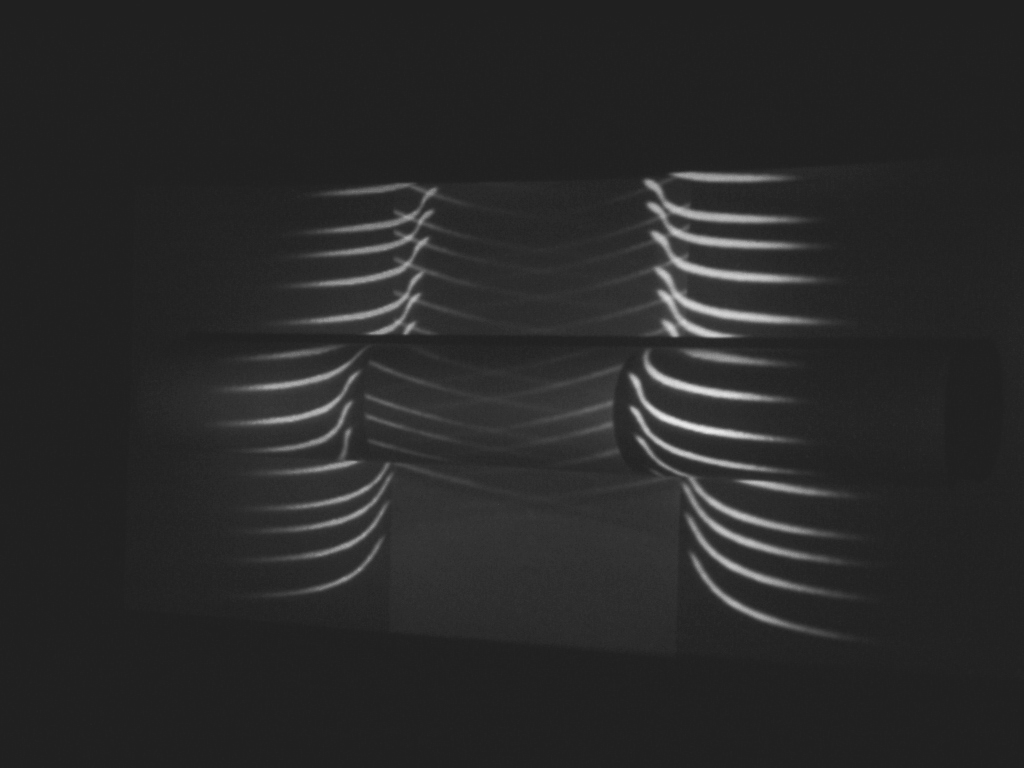 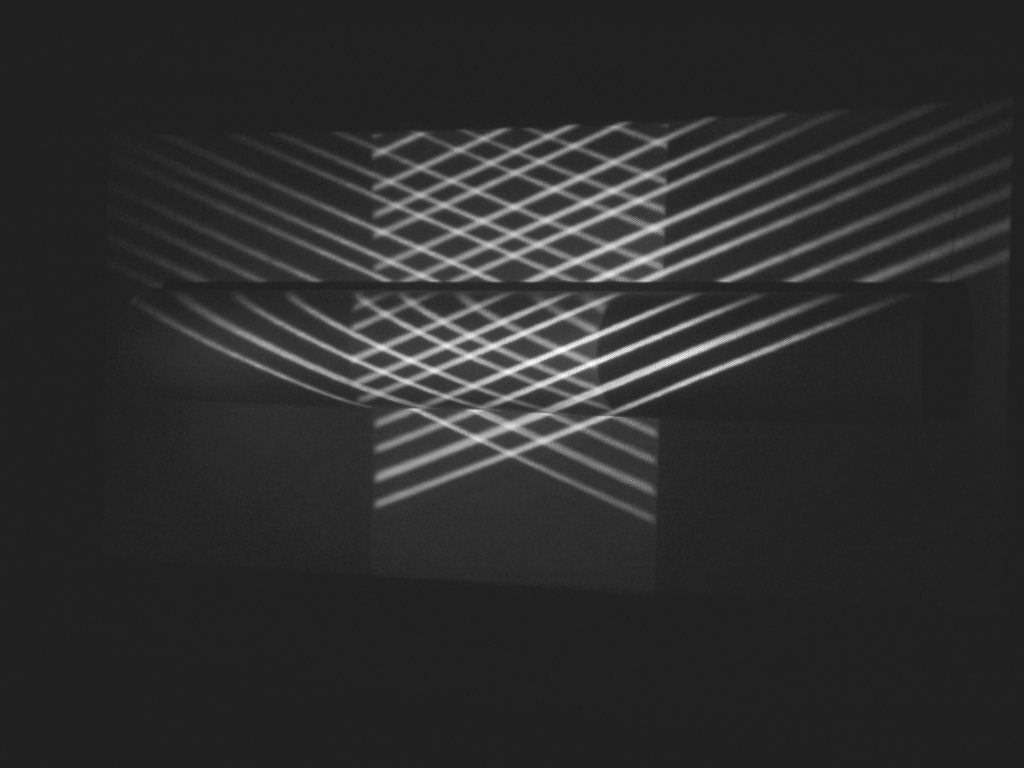
The clear symmetry we get this way will be "disturbed"
during the performance through the interference of the artist. For instance
through the rotation of the white cylinder around its own axis, so that
the picture appearing on its surface does not correspond to the otherwise
symmetrical general view (Fig. 6). Also, the mirror image projection can
be switched for normal during the performance, so that a parallel picture,
without a symmetry axis is being created.
Figure 5, 6: Disturbed Symmetry (video projection with two projectors, 150 x 60 cm, detail).
|
